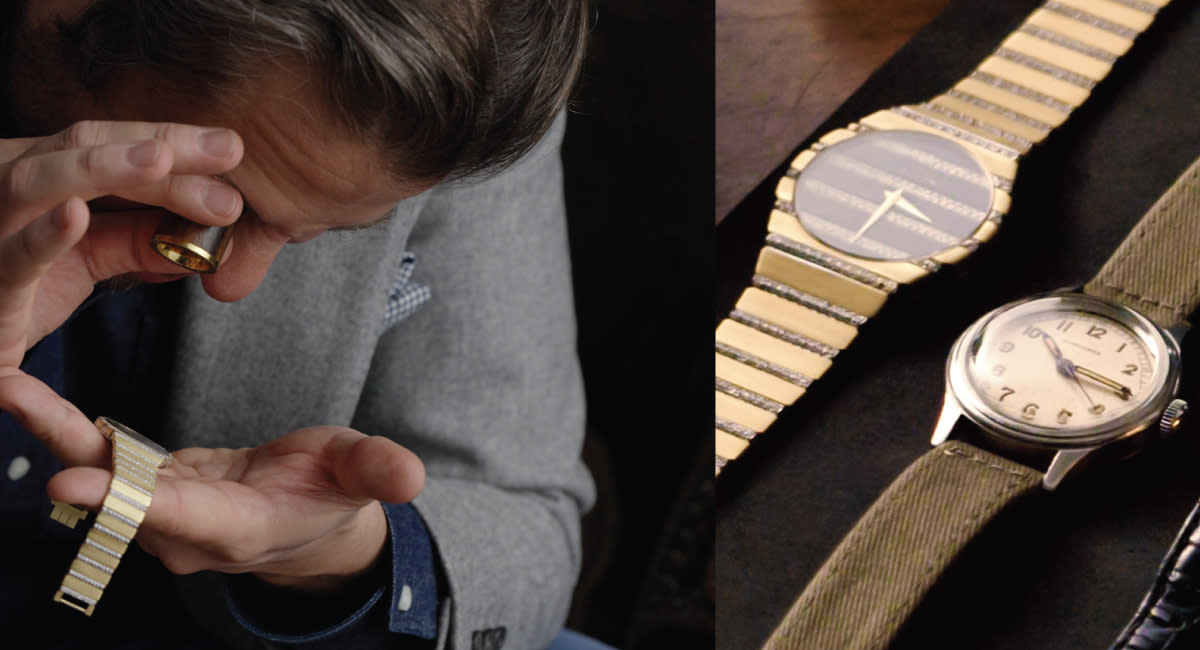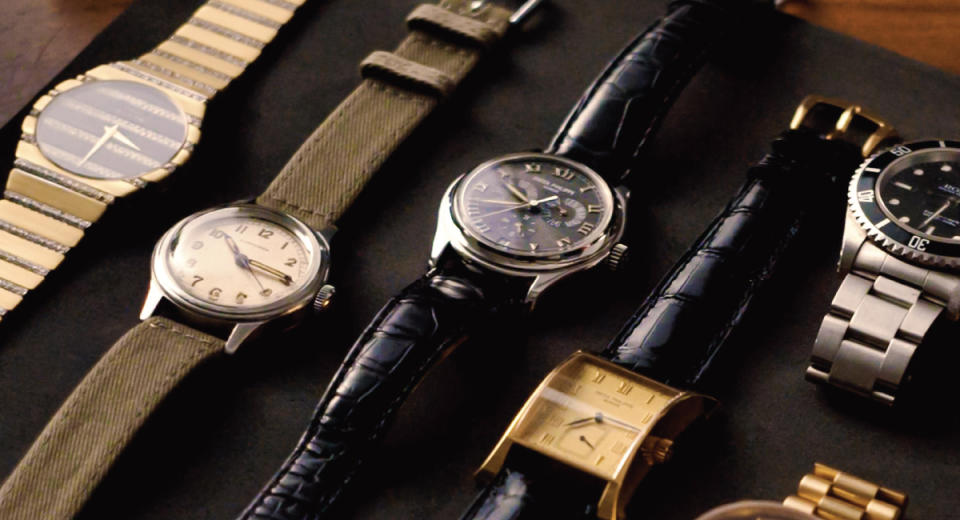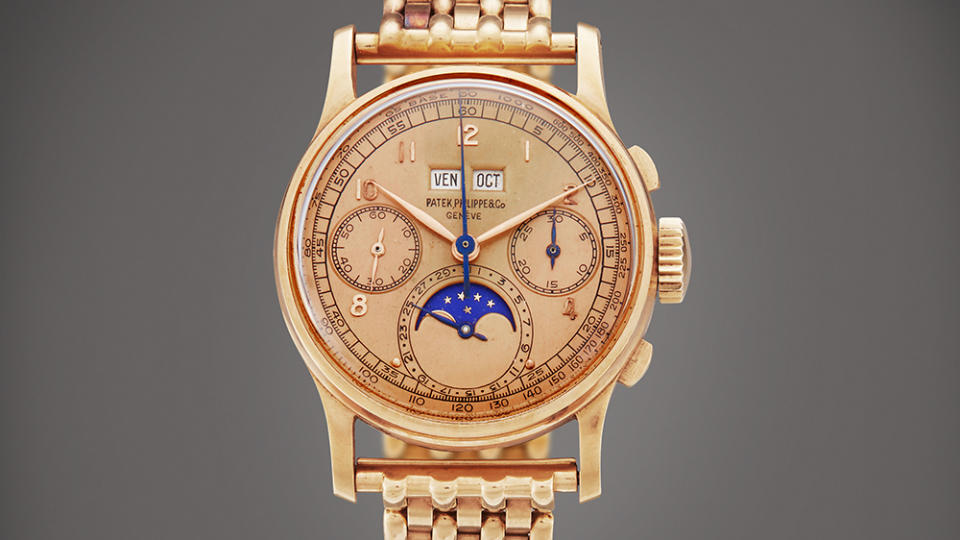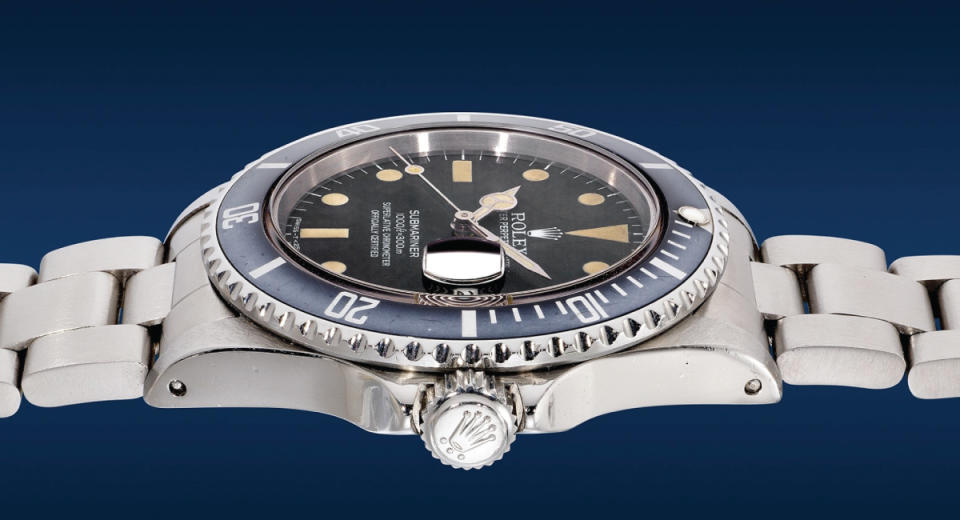How to Collect Vintage Watches: 5 Expert Tips From Dealer Alan Bedwell

Buying anything vintage becomes a quest for authenticity and condition. With watches, those two key elements are not easy to establish, and there are myriad pitfalls into which even the most experienced collector will fall from time to time. Even Omega bought an inauthentic Speedmaster at auction for millions, so it’s good to keep in mind that mistakes are likely. The trick is to minimize the risks by knowing how to set your priorities and how to then know what to look for when seeking out vintage watches.
In our video tutorial, Alan Bedwell, founder and curator of Foundwell, offers up five tips you’ll need to understand in order to venture into the world of vintage-watch collecting. We’ve distilled those points (with a few suggestions of our own) for you below.
More from Robb Report
Why You Should Be Snapping Up Neo-Vintage Watches-and How to Start Collecting Them
Sony's a7 III Camera Shoots Great Photos and 4k Video. It's $500 Off Thanks to Amazon Prime Day.
Of course, there are no hard-and-fast rules for vintage watch collecting. It’s always a moving target, and every single watch presents its own puzzle to solve. But what Bedwell has laid out is expert advice that forms a solid foundation from which to begin your vintage watch collecting journey.
1. Figure Out What You Want
Sometimes the first step is the hardest. What watch do you want? There are sports watches, dress watches, complicated watches, simple field watches, pilot’s watches, dive watches, chronographs, and on and on with the possibilities. Only you can really answer this crucial question.

You’ll probably want to begin by asking yourself: What is this watch for? Is it a do-everything, go-anywhere watch you’ll wear every day, or is it for special occasions only? Is this one you’ll even wear at all, or are you adding it to your budding collection with an eye toward preservation? Do you want a bracelet or a strap? A true vintage piece (over 40 years old) or something a little newer, also known as neo-vintage (roughly 20 to 40 years old, and often a good value)?
One way to make this decision is to play a game of elimination. Keep removing possibilities until you’ve narrowed your preference to a fine enough point to make the final call. It’s impossible to move forward before making this crucial choice.
2. Condition, Condition, Condition
Whatever you do, get a watch in the best condition possible. This means examining the condition of the case, the dial, the handset, and, especially for mechanical watches (as opposed to quartz electronic ones), the movement.
Visually scrutinize the case for major gouges and for over polishing, which you should be able to determine by comparing the example in question against images of a very clean example. Next examine the dial closely, and be sure to look at the outer edges of the dial. Some scratches along the dial’s edge may indicate that the dial has moved a bit in the case over the years, which is fairly common on older dress watches and not always a major concern. However, corrosion (rust, stains, etc…) can indicate water ingress, which suggests that the movement may have been exposed to an abundance of moisture. If you see that, walk away.

For hands, crowns and even the markers on the dial, compare to reference images of a clean example. Make sure hands are not too long, too short or simply wrong. And examine the luminous material (knowns as “lume”) for retouching, excessive damage, caking, cracking and other signs of disintegration. If the crown is not original, start asking questions. Apply the same logic and scrutiny to the bracelet.
As for the movement, you may ask a seller for results from a time-grapher (a machine that measures the performance of a mechanical watch). You should see a reasonable deviation in the precision: Anything beyond 30 or 40 seconds loss or gain per day is generally considered a little concerning, while performance within a few seconds is considered “chronometer-grade” performance and usually indicates a healthy mechanism. However, even a precise watch can have issues. Check the amplitude (angle at which the balance wheel swings back and forth): This should be around or above 260-degrees for most watches and for certain watches (including many Rolex) as high as, or even above, 300 degrees. If you see deviations in precision or amplitude, start asking questions.
3. Buy the Best Example (Within Your Budget)
At first this may sound like a repetition of “condition, condition, condition.” However, the biggest mistake collectors make early on in their watch journey is to aim for a famous or iconic watch just to get it, but without the funds to get a clean example. It’s so tempting to reach for that early Patek perpetual calendar, or that unpolished Rolex Red Sub 1680 with box and papers, or that Speedmaster with the perfectly aged tropical (brown) dial. That’s fine if you’ve the funds for these wonderful things, but—as counter intuitive as this may sound—don’t look for an incredible deal! Instead, let great deals find you and know that you need to find a great seller offering high quality at or near normal market prices. As Bedwell says, follow the old adage: If it seems too good to be true, it probably is.

4. Remember, You’re Buying the Seller
You are about to develop a relationship—one that could last a long time. Make sure your seller is willing to answer all your questions. Seek references from other collectors, and even check online for reviews (Reddit is useful in this regard). If you’re buying an especially expensive piece, ask the seller for client references, which is common enough among dealers and collectors operating at a higher tier.
When inquiring about service, ask for time-grapher results to back up the seller’s claims (see above), but keep in mind that many sellers will claim that they don’t know the service record (likely very true). Finally, ask the seller if they offer any warranties with the sale. A year is common, two years is better. And, importantly, ask what the seller is willing to do if you have issues with the mechanical performance of the watch within the warranty period.
5. Box and Papers Are… Overrated
This is a divisive topic, and it is important to understand that even if we accept that box and papers confer no meaningful value on the material watch itself, an original box and papers set (known as a “full set”) indeed almost always increases the market value of a watch. However, condition of the watch itself far exceeds a full set in your priority list. There is also the risk of getting falsified paperwork, or unoriginal packaging from some other watch. And many collectible 40-year-old watches simply won’t have them anymore. If you’re eyeing one that does, know that many brands will match warranty cards with the watch’s serial number, so keep that in mind when examining original documents.

Ultimately, the decision about a full set or not is up to you. Some collectors adore a full set: There’s the history of these documents, the tactile experience, and even the smell in some cases. You may feel that a full set signals that someone cared enough for this watch to keep all the materials that accompanied the purchase. For others, it’s all about the watch itself. Either way, do not make the mistake of believing that the box and papers indicate anything about the condition of the watch, and go back up to the advice outlined above and follow that before being seduced by a full set. After all, as Bedwell points out, “a really bad watch with original documentation is still a really bad watch.”
Best of Robb Report
Sign up for Robb Report's Newsletter. For the latest news, follow us on Facebook, Twitter, and Instagram.


